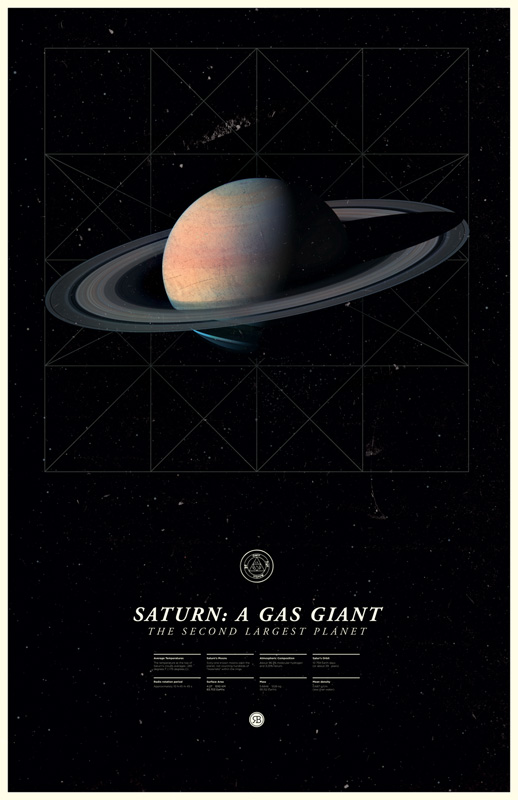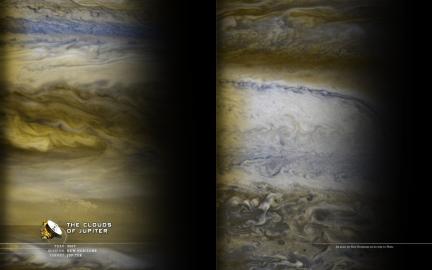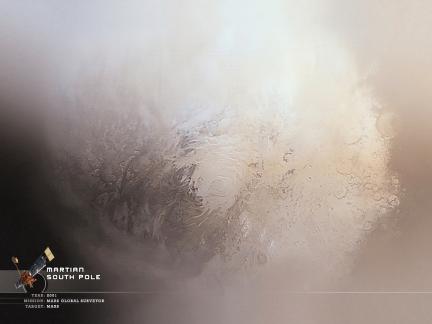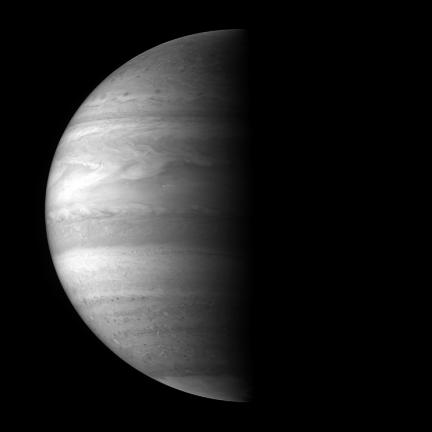 Juno is the first mission to study Jupiter since Galileo in the 90s and will arrive around July of 2016. The new imaging event on this encounter will be seeing the poles of Jupiter for the first time in great detail. The camera fitted to Juno are specifically for public consumption and promotion and less about science. It will be nice to have an instrument specifically dedicated to securing amazing images.
Juno is the first mission to study Jupiter since Galileo in the 90s and will arrive around July of 2016. The new imaging event on this encounter will be seeing the poles of Jupiter for the first time in great detail. The camera fitted to Juno are specifically for public consumption and promotion and less about science. It will be nice to have an instrument specifically dedicated to securing amazing images.
Voyager 1 Approach Video by Bjorn Jonsson
Voyager 1 Approach Video by Bjorn Jonsson from Chopping Block on Vimeo.
“This movie is different from similar Voyager movies because I'm keeping Jupiter's size constant. This is accomplished by reprojecting the source images to simple cylindrical projection and then rendering everything using the same viewing geometry. I also sharpened the images a bit to better reveal various details.” — Bjorn Jonsson
The time lapse estimation is about 10 Earth hours per second. Special thanks to unmannedspaceflight.com for all the awesome.
The Great Red Spot
 This is a reprocessed image of Jupiter’s Great Red Spot from the 1979 Voyager 1 encounter with the planet. Old data like this is being crunched by people like Bjorn Jonsson to create new and better detailed images that were not possible when the data sets were originally acquired. For comparison, just take a look at the “official” NASA release of the same image data from back in '79. I do need to begrudgingly note that the contrast and sharpness have been artificially exaggerated in this newer image for appearance.
This is a reprocessed image of Jupiter’s Great Red Spot from the 1979 Voyager 1 encounter with the planet. Old data like this is being crunched by people like Bjorn Jonsson to create new and better detailed images that were not possible when the data sets were originally acquired. For comparison, just take a look at the “official” NASA release of the same image data from back in '79. I do need to begrudgingly note that the contrast and sharpness have been artificially exaggerated in this newer image for appearance.
Ross Berens Ruins My Dreams
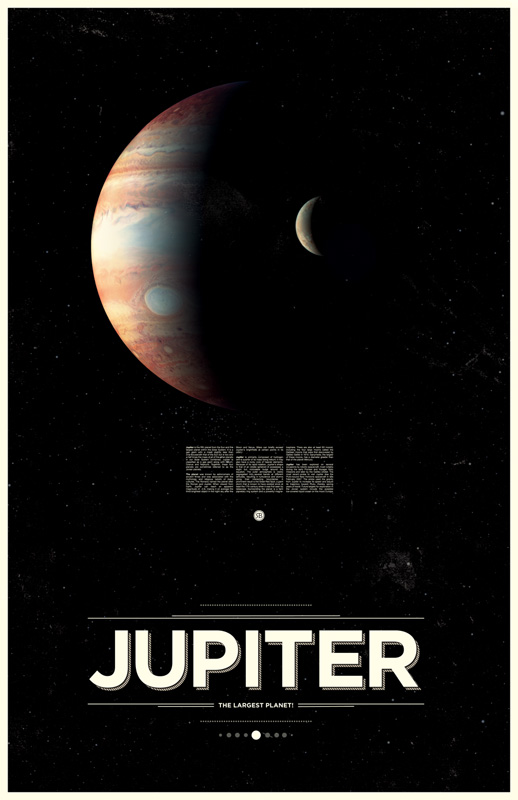 I had really always thought it would be so cool to do a poster set with great design for each of the planets. I actually started a design for the Cassini at Saturn mission, but have yet to complete it. Sure enough someone comes along and knocks the whole system out in one fantastic series. Beat me to it!
I had really always thought it would be so cool to do a poster set with great design for each of the planets. I actually started a design for the Cassini at Saturn mission, but have yet to complete it. Sure enough someone comes along and knocks the whole system out in one fantastic series. Beat me to it!
The funny thing about doing the whole Solar System is that you will not likely have too many takers for Uranus or even Pluto. But the design on some of these makes it pretty tempting to grab just for the overall design. I can’t wait to email Ross when New Horizons gets to Pluto and it looks nothing like what is shown here. A gorgeous inclusion of the hypothetical ring some expect to find when we get there, but where are the 3 moons?
I would be a fool to not include Saturn. The exclusion of the Galileans at Jupiter, no Charon on the Pluto poster and the absence of Titan here on the Saturn poster... I wonder if I sense a moon series coming? Put me down for a copy of Io.
50 Years of Space Exploration Map
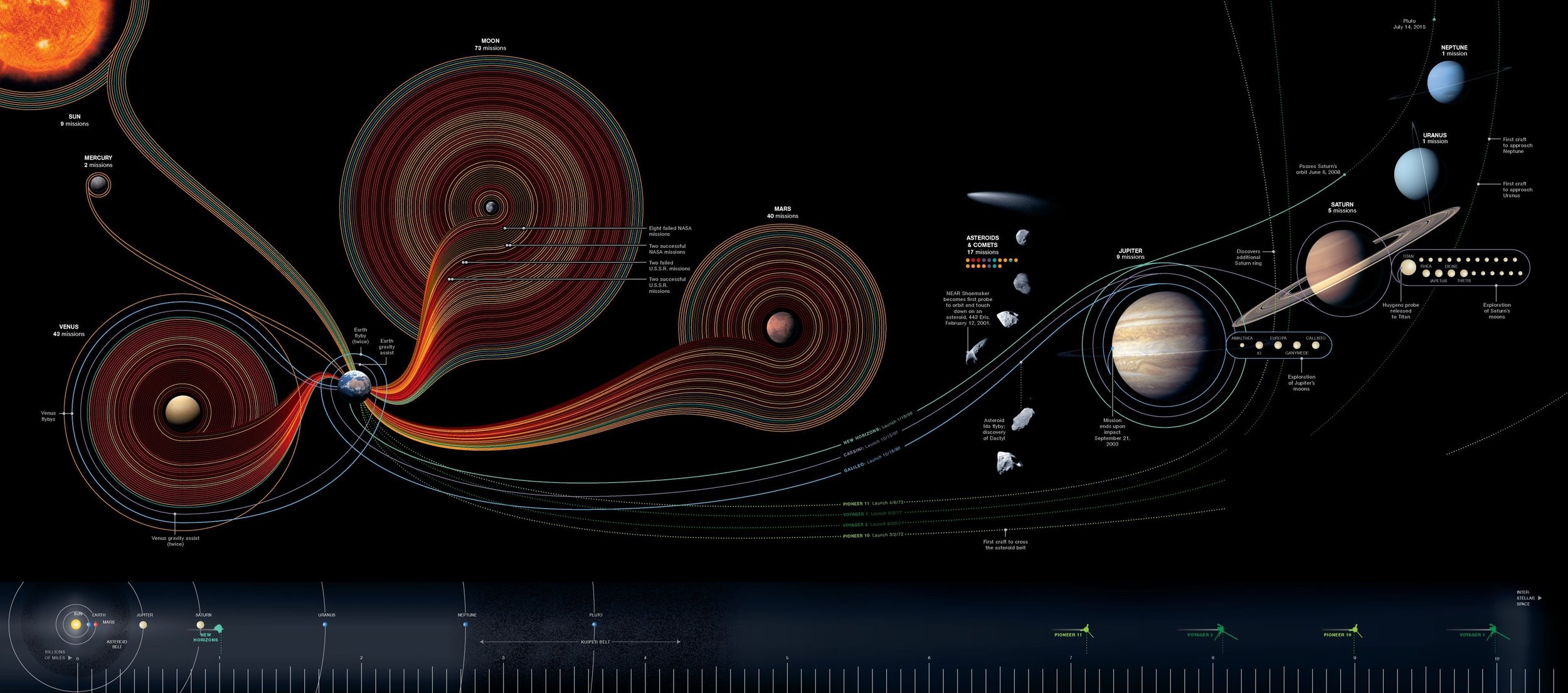 This is so nice, but I am furious that I didn’t get to design this. This is Information design at it’s best naturally by National Geographic. You can see 50 years of robotic planetary exploration at a glance. It even includes failed missions represented by darker desaturated lines. As far as I can tell the cream colored lines are US and the red ones are Soviet. Interesting to see how many of those lines go dark around Mars.
This is so nice, but I am furious that I didn’t get to design this. This is Information design at it’s best naturally by National Geographic. You can see 50 years of robotic planetary exploration at a glance. It even includes failed missions represented by darker desaturated lines. As far as I can tell the cream colored lines are US and the red ones are Soviet. Interesting to see how many of those lines go dark around Mars.
Now where does one purchase such a thing? Perhaps this month’s issue of NG? Here is the link to it on their site complete with zoom viewer and them some kind samaritan posted a hires version to flickr.
Jupiter Slammed Again
 Barely 15 years after Comet Shoemaker-Levy slammed into Jupiter, another large object hit Jupiter this month when nobody was looking. This image was taken 4 days after the event and displays an Earth-sized scar in the upper atmosphere of the planet. The object that did the slamming is estimated to have been about the size of several football fields. This should be a fairly rare event, although twice in 15 years is literally a blip on a celestial time scale.
Barely 15 years after Comet Shoemaker-Levy slammed into Jupiter, another large object hit Jupiter this month when nobody was looking. This image was taken 4 days after the event and displays an Earth-sized scar in the upper atmosphere of the planet. The object that did the slamming is estimated to have been about the size of several football fields. This should be a fairly rare event, although twice in 15 years is literally a blip on a celestial time scale.
iPhone Skins Featured on feulyourcreativity.com
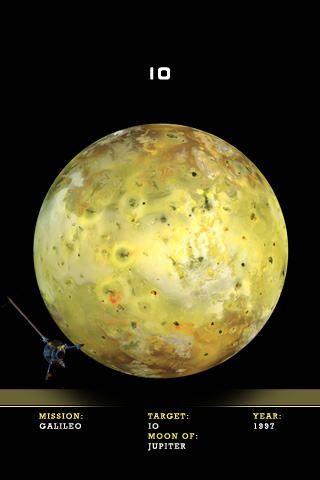 Not to re-post old material, but our iPhone planetary skins were recently posted to fuelyourcreativity.com for free download. So I thought I would just remind everyone and maybe direct a little traffic love their way.
Not to re-post old material, but our iPhone planetary skins were recently posted to fuelyourcreativity.com for free download. So I thought I would just remind everyone and maybe direct a little traffic love their way.
Outer Planets Mission Selected
 It is final. NASA (and ESA) have selected the next flagship mission to the outer planets. The target is the Jupiter system, and by “system” I do mean system. NASA’s side of things will concentrate on a Europa orbiter which will observe Jupiter’s moon in details that we have never seen before. See this youTube video for a good overview. The last time we were near Europa enough to make close observation was with Galileo, but problems with that spacecraft resulted in a limited amount of data that one would expect from such a long orbiter mission such as Galileo.
It is final. NASA (and ESA) have selected the next flagship mission to the outer planets. The target is the Jupiter system, and by “system” I do mean system. NASA’s side of things will concentrate on a Europa orbiter which will observe Jupiter’s moon in details that we have never seen before. See this youTube video for a good overview. The last time we were near Europa enough to make close observation was with Galileo, but problems with that spacecraft resulted in a limited amount of data that one would expect from such a long orbiter mission such as Galileo.
Beyond Europa, the mission will also be close enough to do great observations of its closest neighbor, Io, as well – of course – as it’s host planet Jupiter. Also worth noting is the possible adoption of an Io specific orbiter as part of the New Horizons class of spacecraft whose targets for the next decade have yet to be determined.
Lastly, and certainly not at all a small thing… ESA will be running a Ganymede orbiter to work in tandem with the Europa mission. The two missions are more like partner missions such as the 2 Mars rovers than separate ones. They seem to planning for them both to arrive at the same time (or even launched from the same rocket, is that even possible?).
For those unfamiliar with these bodies, check out these links to other posts about Europa and Ganymede.
Hubble Almost Beats Voyager
 The two 80's Voyager missions to Jupiter were one of the highlights of the decade in planetary missions. There were some images from the two Voyagers that were closer in detail that we can hope to do from Earth orbit, but this image above comes close. You wouldn’t know this was not a Voyager, or even a Galileo mission image except for the fact its not. Hard to imagine that only 20 years ago we couldn’t see a single detail on Ganymede’s surface without actually sending a probe to the Jupiter system. This view from Hubble is, “so sharp that astronomers can see features on Ganymede's surface, most notably the white impact crater, Tros, and its system of rays, bright streaks of material blasted from the crater”.
The two 80's Voyager missions to Jupiter were one of the highlights of the decade in planetary missions. There were some images from the two Voyagers that were closer in detail that we can hope to do from Earth orbit, but this image above comes close. You wouldn’t know this was not a Voyager, or even a Galileo mission image except for the fact its not. Hard to imagine that only 20 years ago we couldn’t see a single detail on Ganymede’s surface without actually sending a probe to the Jupiter system. This view from Hubble is, “so sharp that astronomers can see features on Ganymede's surface, most notably the white impact crater, Tros, and its system of rays, bright streaks of material blasted from the crater”.
MAD Infrared Jupiter Image
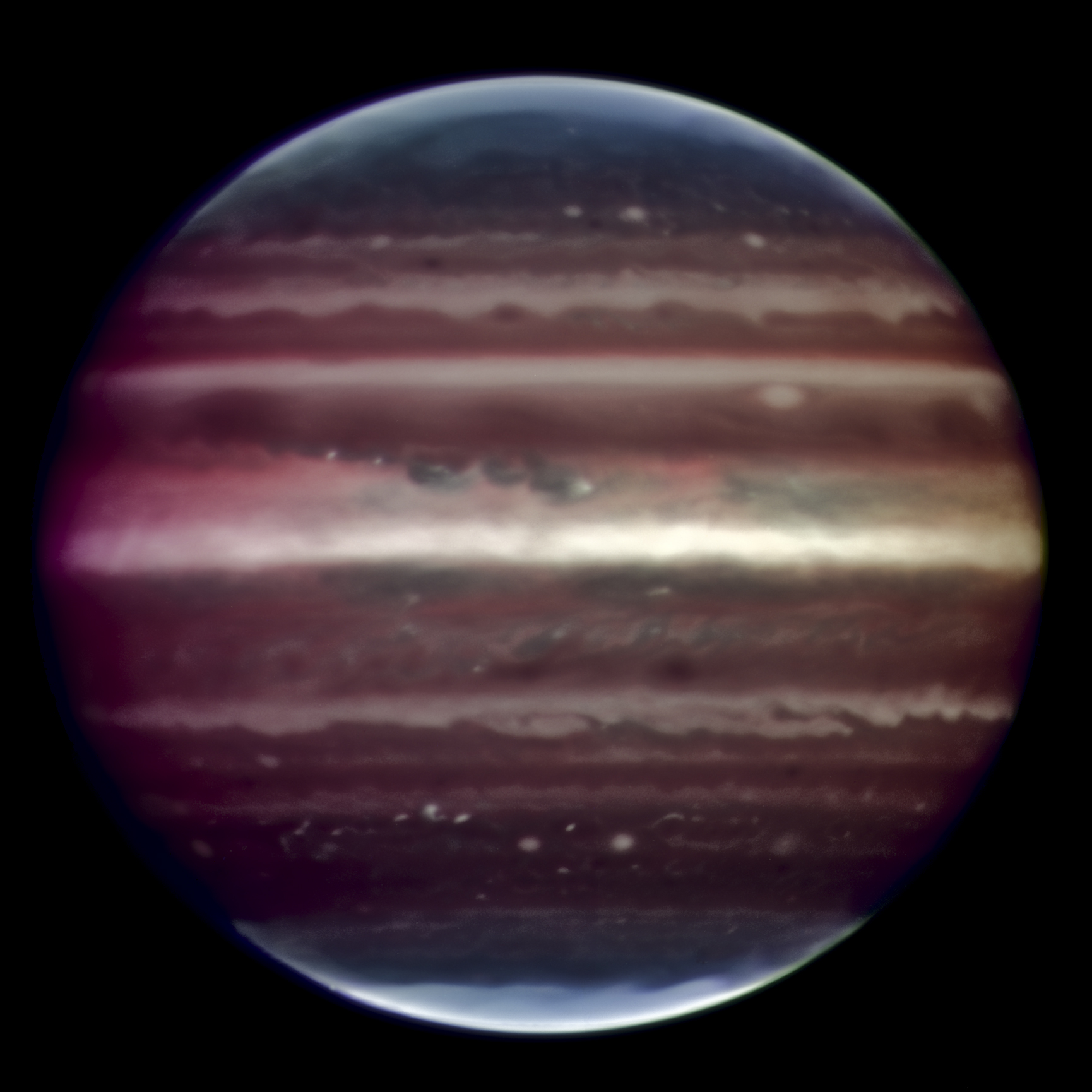 “Jupiter in infrared light, taken on the night of 17 August 2008 with the Multi-Conjugate Adaptive Optics Demonstrator (MAD) prototype instrument mounted on ESO’s Very Large Telescope. This false colour photo is the combination of a series of images taken over a time span of about 20 minutes, through three different filters (2, 2.14, and 2.16 microns).”
“Jupiter in infrared light, taken on the night of 17 August 2008 with the Multi-Conjugate Adaptive Optics Demonstrator (MAD) prototype instrument mounted on ESO’s Very Large Telescope. This false colour photo is the combination of a series of images taken over a time span of about 20 minutes, through three different filters (2, 2.14, and 2.16 microns).”
See Centauri Dreams for more.
Io and Amalthea Portrait
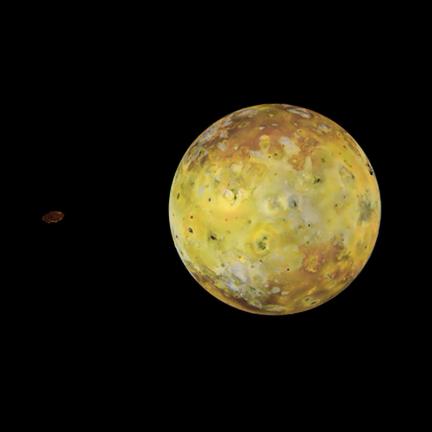 A rare view of Io and the small moon Amalthea seen in the same view was taken by Galileo and recently reprocessed by Ted Stryk (his page is linked lower right). Amalthea is a tiny elongated moon that appears to be quite red. It is assumed that the longish shape and red hue come from the deposit of materials ejected off Io and spiral inward to Jupiter, swept up by Amalthea in its orbital path.
A rare view of Io and the small moon Amalthea seen in the same view was taken by Galileo and recently reprocessed by Ted Stryk (his page is linked lower right). Amalthea is a tiny elongated moon that appears to be quite red. It is assumed that the longish shape and red hue come from the deposit of materials ejected off Io and spiral inward to Jupiter, swept up by Amalthea in its orbital path.
A similar phenomenon has also been seen at Saturn with moonlets that “sweep” ring materials.
New Horizons Opens its Vault
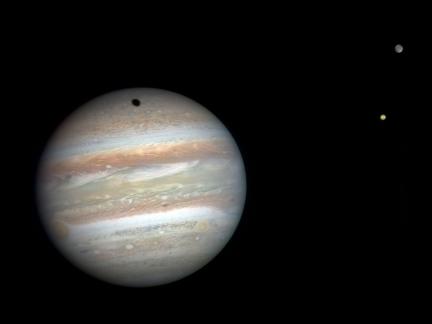 The New Horizons team has made all the MVIC (Multispectral Visible Imaging Camera) images as well as the LORRI (Long Range Reconnaissance Imager) images from the Jupiter encounter available for imagers to kick around. The above image is by Gordan Ugarkovic and is apparently a “colorized” version of a monochrome he created using earth based observations of the planet from around the same time. In addition to the two moons (and a shadow), also visible are both the Great Red Spot as well as the “Red Junior” spot which has in recent months has become a new notable feature of Jupiter.
The New Horizons team has made all the MVIC (Multispectral Visible Imaging Camera) images as well as the LORRI (Long Range Reconnaissance Imager) images from the Jupiter encounter available for imagers to kick around. The above image is by Gordan Ugarkovic and is apparently a “colorized” version of a monochrome he created using earth based observations of the planet from around the same time. In addition to the two moons (and a shadow), also visible are both the Great Red Spot as well as the “Red Junior” spot which has in recent months has become a new notable feature of Jupiter.
The iPhone Set 01: Bodies of Major Interest
 If I am going to keep making these things… I’d be a fool to not include a set for the Apple iPhone. Coincidentally, when you purchase your iPhone and do not yet have a phone service, the phone displays a full-disc image of the Earth pretty much displayed exactly as these do when uploaded to your iPhone. So in the spirit of continuity, you can now opt instead to have Mercury, Venus, Earth, The Moon (Luna), Mars, Jupiter, Io, Europa, Ganymede, Callisto, Saturn, Enceladus, Titan, Iapetus, Hyperion, Uranus, Miranda, Neptune or Triton grace your screen instead of the default Earth.
If I am going to keep making these things… I’d be a fool to not include a set for the Apple iPhone. Coincidentally, when you purchase your iPhone and do not yet have a phone service, the phone displays a full-disc image of the Earth pretty much displayed exactly as these do when uploaded to your iPhone. So in the spirit of continuity, you can now opt instead to have Mercury, Venus, Earth, The Moon (Luna), Mars, Jupiter, Io, Europa, Ganymede, Callisto, Saturn, Enceladus, Titan, Iapetus, Hyperion, Uranus, Miranda, Neptune or Triton grace your screen instead of the default Earth.
The easiest way to install wallpapers to your iPhone is to make a special set in iPhoto and simply drag all the files to that folder. Then in iTunes have your iPhone sync that folder to your photos collection. After that it is as simple as opening the “Photos” area of your iPhone. Go to your new folder of images and open whichever image you want. Then tap on the image just once and assign it as a wallpaper using the “Use as Wallpaper” button in the lower left corner of the screen.
If you have a PC I have no idea in hell how the hell you get images into your iPhone. I would buy a Mac… you have an iPhone and use iTunes… you are half-way there.
For a version of these with no graphics see this link.
Wallpaper 2560x1600 Set 03: The Planets
The planets – the complete set for collectors! While there are literally thousands of images of the planets to choose from… full globe high resolution images are actually fairly rare. They usually require many exposures to be stitched together to make one large complete image. This is not only difficult to work out across the great distances of space, but also soaks up a large amount of valuable spacecraft time and energy. This set represents the best available images of each planet in our Solar System.
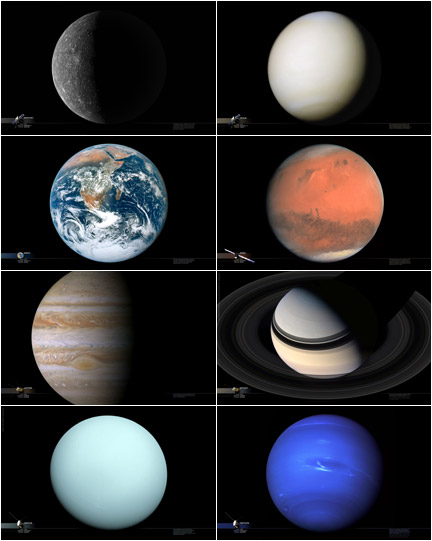
Sorry, no Pluto for more than one reason.
New Horizons is New Again
A bunch of new data was recently released from the New Horizons encounter with Jupiter in February. Included in that was this impressive composite of Jupiter’s clouds.
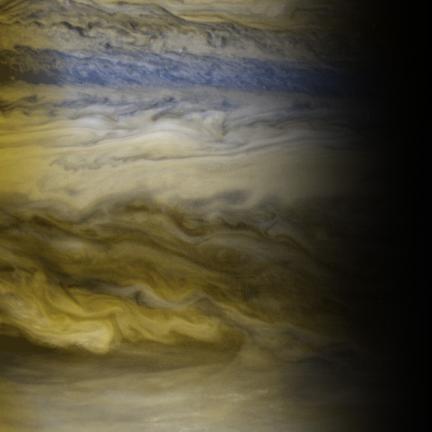
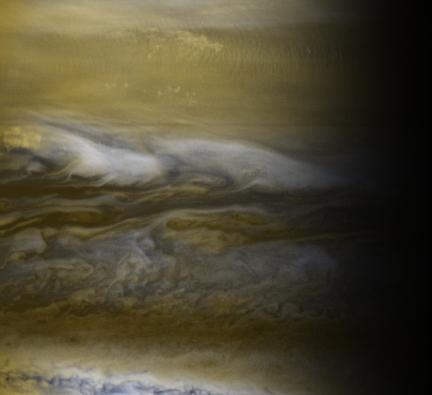
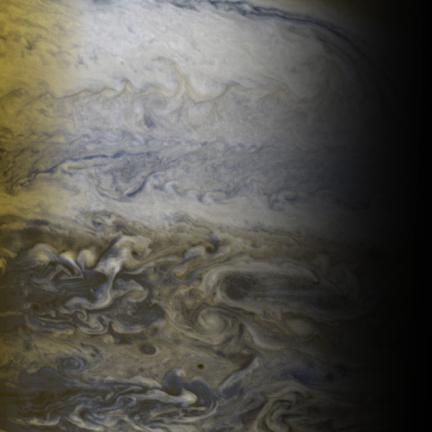 The image is presented here in 3 parts as I just have not figured out how to post tall images in my build of WordPress without it scaling oddly into the page format.
The image is presented here in 3 parts as I just have not figured out how to post tall images in my build of WordPress without it scaling oddly into the page format.
The original released by NASA had an odd grey faded edge which looks fairly fake and manipulated. The description states that it was taken at the edge of Jupiter’s night-side, so we adjusted the above images to look more natural than the way it appeared here.
Wallpapers: 1024x768 Set 05
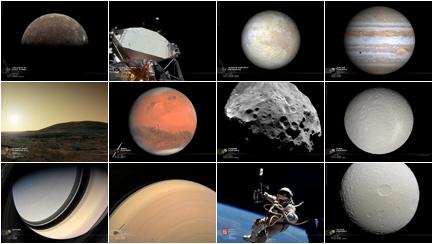 Managed to make the more common wallpaper size 1024x768 for the 14 most recent wallpaper posts (started with set 05 images, 1-4 to come). Download zip file here. Some were not produced as they just didn’t translate so easily into the format. However, the opposite is true in some cases such as for this image of the Martian south pole. Its resolution was hopelessly low for the larger landscape format, so now with the smaller size it was possible (just barely) to get it posted as a wallpaper.
Managed to make the more common wallpaper size 1024x768 for the 14 most recent wallpaper posts (started with set 05 images, 1-4 to come). Download zip file here. Some were not produced as they just didn’t translate so easily into the format. However, the opposite is true in some cases such as for this image of the Martian south pole. Its resolution was hopelessly low for the larger landscape format, so now with the smaller size it was possible (just barely) to get it posted as a wallpaper.
Included in the set for download are the images pictured at the top and for the sake of google search, here they are listed out:
- 1024x768 Wallpaper of CALLISTO at half view, moon of JUPITER
- 1024x768 Wallpaper of EARTH from APOLLO landing site
- 1024x768 Wallpaper portrait of EUROPA, moon of JUPITER
- 1024x768 Wallpaper portrait of JUPITER
- 1024x768 Wallpaper of MARS region of DEUTERONILUS (not shown)
- 1024x768 Wallpaper of MARS surface at HUSBAND HILL
- 1024x768 Wallpaper portrait of MARS
- 1024x768 Wallpaper portrait of PHOEBE, moon of SATURN
- 1024x768 Wallpaper portrait of RHEA, moon of SATURN
- 1024x768 Wallpaper of SATURN, crescent view (not shown)
- 1024x768 Wallpaper of SATURN from above the NORTHERN POLE
- 1024x768 Wallpaper of SATURN globe
- 1024x768 Wallpaper of SPACE WALK
- 1024x768 Wallpaper portrait of TETHYS, moon of SATURN
Telescopic Views of Our Moon and Other Planets
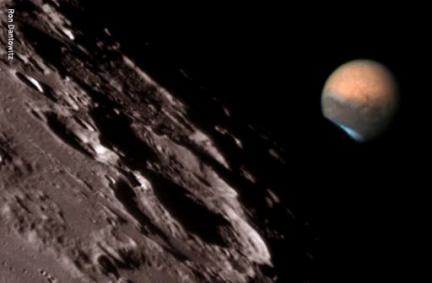
I stumbled across an image of Mars and our moon a while back, either on Universe Today or just from looking for great images of Mars on google. Anyway, it never occured to me that you can get such great detail of Mars while still being able to see a limb of the Moon in the same view. I thought it was a Photoshop job until I looked up “occult+Saturn+moon” and found similar images. For some reason, Jupiter images are more a rarity. What is unmistakable is that the above Moon/Mars image by Ron Dantowitz is pretty incredible for its clarity and detail.
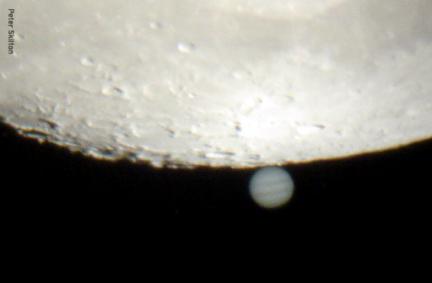
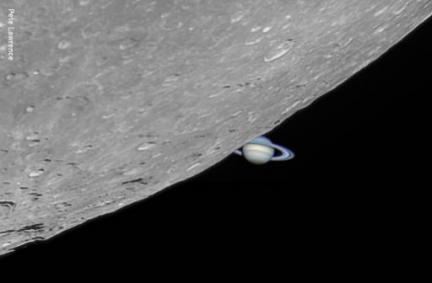
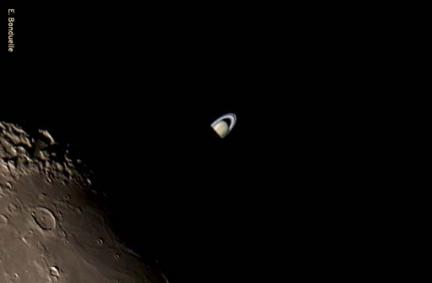
I couldn’t find any of the moon and a tiny blue dot of Uranus, but you can always use your imagination.
U. Gordan just sent me one of Venus too
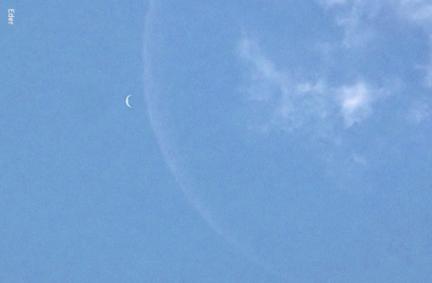
Monster Sized Monochrome Image of Jupiter
For full resolution monster sized image click here.
Io Plume and Europa Rises
Active Plumes on Io
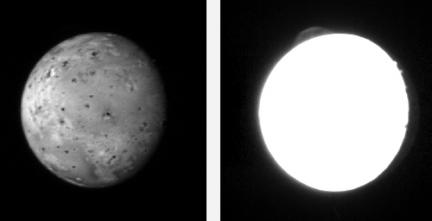 As New Horizons makes its closest approach to Jupiter, we are already seeing considerable activity from a volcano known as Tvashtar. This comes of no surprise as this was detected a few weeks back when scientists maintained observations of Io through the Hubble Space Telescope in preparation for this event. This is already the best image of an active volcano eruption on Io since the Voyager flybys in 1975 (revealed through over-exposure). Details here are somewhat greater than those taken by Galileo or Cassini and are expected to only get better before all the data is in.
As New Horizons makes its closest approach to Jupiter, we are already seeing considerable activity from a volcano known as Tvashtar. This comes of no surprise as this was detected a few weeks back when scientists maintained observations of Io through the Hubble Space Telescope in preparation for this event. This is already the best image of an active volcano eruption on Io since the Voyager flybys in 1975 (revealed through over-exposure). Details here are somewhat greater than those taken by Galileo or Cassini and are expected to only get better before all the data is in.

